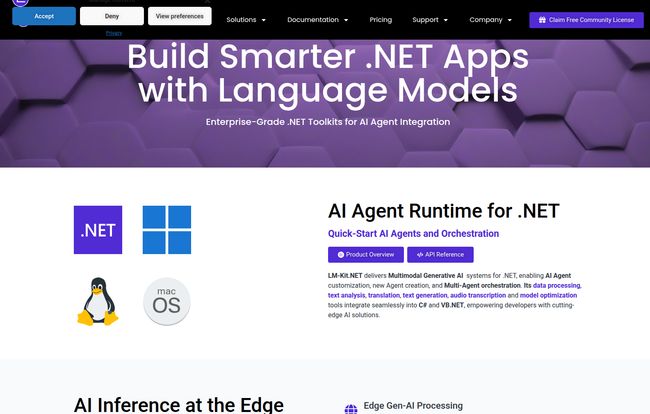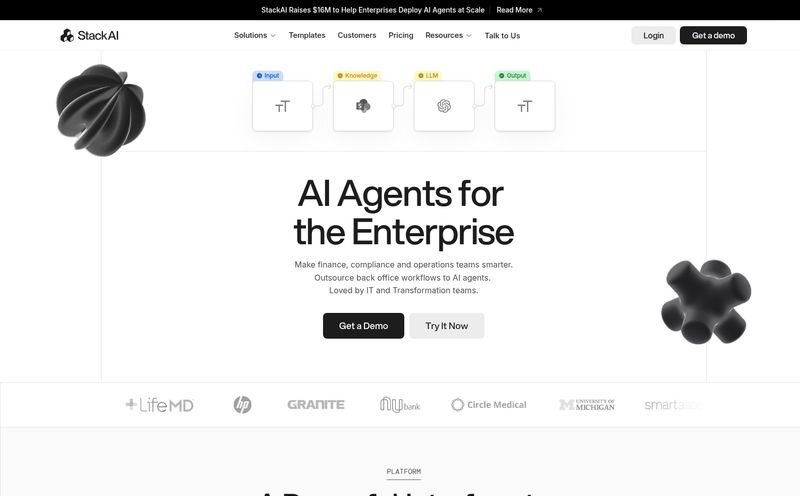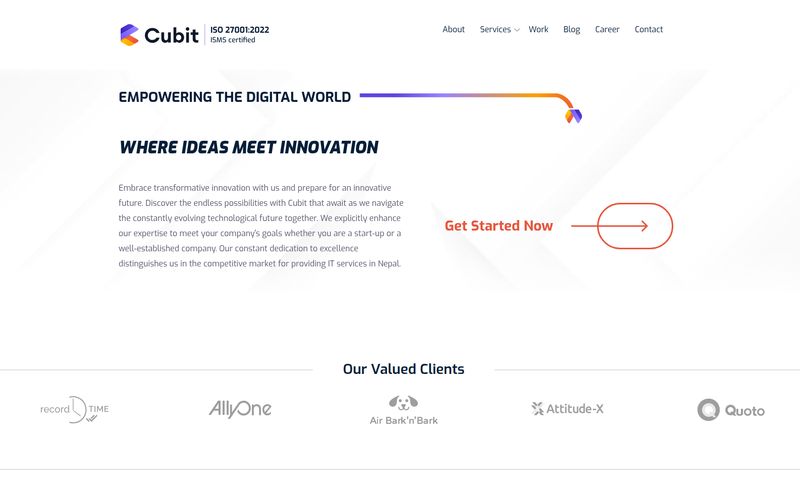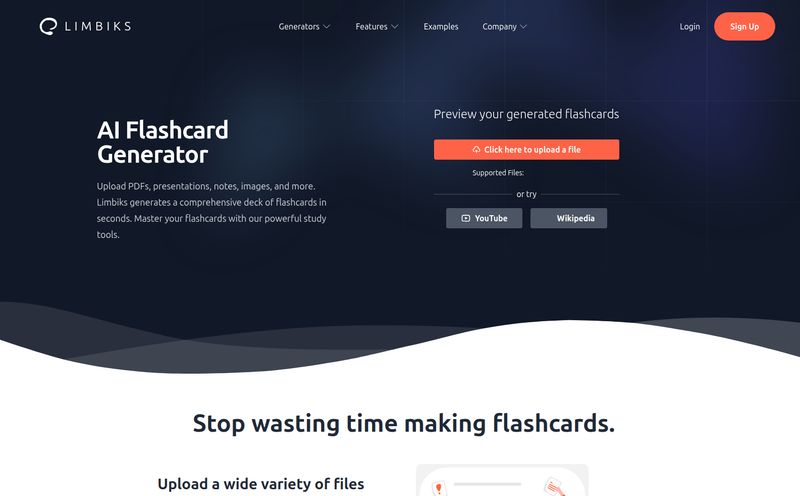Let’s have a little chat. If you’re a .NET developer, you’ve probably felt it. That slight twinge of jealousy watching the Python crowd get all the shiny new AI toys first. For years, integrating serious machine learning or a powerful LLM into a C# or VB.NET application felt… clunky. It often involved awkward API wrappers, wrestling with cross-platform dependencies, or just settling for less. It’s like being told you can come to the party, but you have to use the back door and your drinks aren't free.
I've been in the SEO and traffic game for years, and I’ve seen countless tools rise and fall. The ones that stick around are the ones that solve a real, nagging problem without adding a ton of new ones. So when I stumbled upon LM-Kit.NET, my curiosity was definitely piqued. It claims to be an “Enterprise-Grade .NET Toolkit for AI Agent Integration.” Big words. But could it actually deliver a first-class AI experience right within the cozy confines of the .NET ecosystem? I decided to dig in.
So What is LM-Kit.NET, Really?
Okay, let's cut through the marketing fluff. At its core, LM-Kit.NET is a Software Development Kit (SDK) designed to bring advanced generative AI capabilities directly into your C# and VB.NET applications. We're talking text completion, natural language processing, data extraction, and all that good stuff.
But here’s the kicker, and it’s a big one: it’s built for on-device AI inference. This isn’t just another wrapper for an OpenAI API call. The whole idea is to run the AI models locally, on your own hardware. Think about that for a second. It's less like shouting your questions to a remote oracle in the cloud and more like having a tiny, brilliant AI sage living directly inside your application. This changes the game for a few huge reasons: latency drops, user privacy gets a massive boost, and you’re not at the mercy of unpredictable API costs and rate limits. For any business handling sensitive data, that’s not just a feature; it’s a necessity.
The Features That Actually Matter
A long list of features is great for a landing page, but which ones will you actually use? I combed through their offerings, and a few things really stood out to me as genuinely useful for building modern, intelligent applications.
AI Agents and Smart Orchestration
This isn't just about generating a block of text. LM-Kit.NET is designed around the concept of AI Agents. You can build, customize, and even orchestrate multiple agents to work together on complex tasks. Imagine an agent that monitors customer support emails, another that extracts key information (like order numbers or product names), and a third that drafts a personalized reply based on that info. That's the kind of sophisticated workflow we're talking about, and it's all handled natively.
Running AI at the Edge
I mentioned this before, but it bears repeating. The ability to run inference “at the edge” is huge. It means your app can function in environments with spotty or no internet. It means your user’s data never has to leave their device or your secure server. It means the response time for an AI-powered feature is measured in milliseconds, not seconds. This is how you build applications that feel snappy and responsive, not laggy and dependent on a third-party server's good mood.
The platform seems pretty flexible too, boasting optimized performance on standard CPUs and specialized hardware like Apple’s ARM with Metal or NVIDIA GPUs with CUDA. So it’s not just for massive server farms.

Visit LM-Kit.NET
A Full Toolbox: From RAG to NER
Okay, acronym alert. But these are important. The toolkit includes things like RAG (Retrieval-Augmented Generation), which is a fancy way of saying you can feed the AI your own documents and data, so it answers questions based on your knowledge base, not just its general training. This is how you build a truly custom chatbot or internal search tool.
It also offers a whole suite of specialized functions. You get Structured Data Extraction to pull specific info from messy text, Text Correction to clean up user input, Named Entity Recognition (NER) to identify people, places, and things, and even Emotion Detection. This is a comprehensive set of tools that goes far beyond simple text generation. It's the difference between a novelty chatbot and a serious business process automation tool.
Let's Talk Money: LM-Kit.NET Pricing and Licensing
This is where the rubber meets the road for most of us. A tool can be amazing, but if the pricing is out of touch with reality, it's a non-starter. LM-Kit.NET has an interesting, two-tiered approach.
The Very Welcoming Community License
First off, there’s a free Community License. I love this. It’s for small companies with fewer than 20 employees. This is a fantastic way for startups, small agencies, or indie developers to build a proof-of-concept or even a full product without a hefty upfront investment.
Now, there are a few catches, as you’d expect. This license is for Windows only, technical support is limited, and you must acknowledge that you’re using LM-Kit.NET on your product’s webpage. Honestly? That's a pretty fair trade-off for a free, powerful AI toolkit. It gets you in the door and lets you prove the value before you have to pay.
The Professional License for Business Growth
When you're ready to scale or if you're a larger company, you'll need the Professional License. The pricing is on a per-application, annual subscription basis. Here's a quick breakdown:
| Licenses | Annual Price (USD) |
| 1 Application License | $1,000 |
| 2 Application Licenses | $1,800 |
| 3 Application Licenses | $2,500 |
| 5 Application Licenses | $3,500 |
| 6+ Application Licenses | $700 per application |
This model is pretty straightforward. One license per distinct software product you create. If you have a desktop app and a server backend that both use the kit, that's two applications. The Professional tier also unlocks support for Linux and macOS, which is critical for cross-platform deployment. And importantly, it includes the LM-Kit Models License. They also offer a 30-day money-back guarantee, which is always a good sign of a company that stands behind its product.
The Good, The Bad, and The .NET-Specific
So, after all that, what’s my verdict? No tool is perfect, but LM-Kit.NET gets a lot of things right, especially for its target audience.
The biggest win, in my opinion, is the seamless, native .NET integration. This feels like it was built for .NET developers, by .NET developers. No more fighting with Python wrappers. The focus on privacy and speed with on-device inference is another massive plus. In an age of constant data breaches and user skepticism, this is a powerful selling point.
On the flip side, the limitations of the Community License, particularly being Windows-only, might be a hurdle for some small teams who want to deploy on Linux servers from day one. And the per-application pricing of the Professional License, while clear, could get pricey for a developer or company that produces a large number of smaller, distinct applications. It’s a model that favors building one or two large, significant products over a dozen small utilities.
So, Who Is This Really For?
I see a few clear winners here. Enterprise development teams building sophisticated internal applications where data security is paramount will love this. Think financial modeling tools, healthcare data processors, or legal document analysis systems.
Software companies (ISVs) that want to embed unique, private AI features into their flagship products are another perfect fit. The RAG feature alone could become a major competitive advantage. Finally, startups and small businesses who qualify for the free Community License have an incredible opportunity to innovate and compete without breaking the bank. It's a genuine enabler.
If you're a hobbyist just looking to build a quick, cloud-connected gadget, the overhead and licensing model might be more than you need. But for serious application development in the .NET world, LM-Kit.NET feels like a very, very compelling option.
It’s just refreshing to see a company invest so heavily in the .NET AI space. It feels like someone finally understood the assignment and built the tool that many of us have been waiting for. It’s not just a port or an afterthought; it feels like a native citizen of the .NET world.
Frequently Asked Questions about LM-Kit.NET
What's the main difference between the Community and Professional licenses?
The Community License is free for small companies (<20 employees) but is limited to Windows, requires public attribution, and has limited support. The Professional License is a paid annual subscription, supports Windows, Linux, and macOS, includes full support, and has no attribution requirement.
Does “per application” mean per user or per installation?
Neither. It means per distinct software product. According to their FAQ, if you create one unique software application that you distribute to 1,000 customers, you only need one license. If you create two different software products, you’d need two licenses.
Do I need an internet connection for LM-Kit.NET to work?
One of the primary advantages of LM-Kit.NET is its on-device inference capability. This means the core AI processing can happen locally on the user's machine or your server, without needing a constant internet connection to an external API.
Is there a limit on how many developers in my company can use one license?
No. The licensing is tied to the application, not the number of developers. Your entire team can work on a licensed application without needing individual seats.
What if I'm just building an internal tool for my company? Does that still require a license?
Yes, an internal-use application is still considered one unique application and requires its own license, either Community (if your company is eligible) or Professional.
Reference and Sources
- LM-Kit.NET Official Website: https://lm-kit.com/
- LM-Kit.NET Pricing Information: https://lm-kit.com/pricing/



